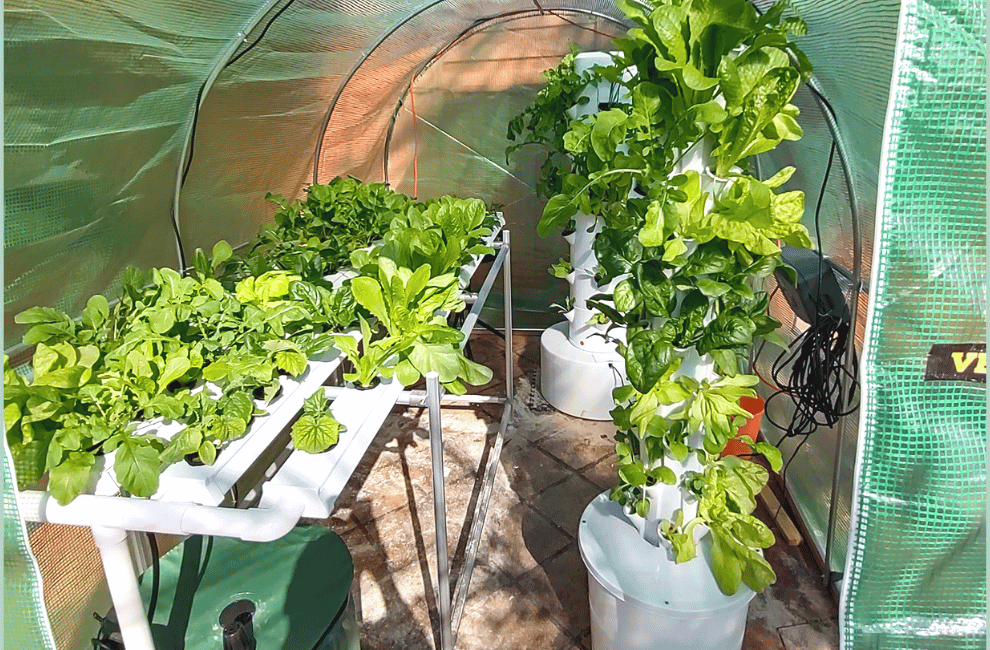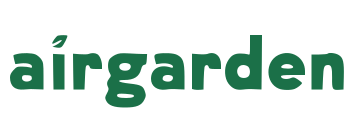
Aeroponics vs Hydroponics - Learning the Difference

Traditionally, growing meaningful amounts of fresh produce meant large outdoor farms or gardens, access to suitable soil, keeping countless pests at bay, and backbreaking work. But today gardening has changed! There are now myriad ways of growing, many of them purpose-built to make it possible to grow more with less time, space and resources.
Two of the most popular new methods of gardening are hydroponics and aeroponics. So what is the difference between them and what are their benefits?
What are Aeroponics and Hydroponics?
Aeroponics is a subset of hydroponics – both are processes of growing plants with water and a nutrient-rich solution, without the use of any soil. With both hydroponics and aeroponics, plants are grown in a controlled growing environment, which can lead to faster and more efficient plant growth compared to soil-based methods. Additionally, both growing methods can be used to grow plants vertically and horizontally in areas where there is no suitable soil or space is limited, such as in greenhouses, in space, or on a balcony with a vertical garden like the Airgarden.
What is the difference between Aeroponics and Hydroponics?
While both aeroponics and hydroponics do not use soil to grow plants, and instead utilise a liquid nutrient solution to feed the plants, there are some key differences between them.
The main difference between hydroponics vs aeroponics is that in hydroponics, plants’ roots are consistently submerged and grown in a nutrient-rich water solution. Whereas in aeroponics, roots are suspended in open air and sprayed with nutrient-rich water or fine, high-pressure mist containing nutrient-rich solutions at certain intervals.
This makes aeroponics a more advanced form than the hydroponic systems.
Hydroponic vs Aeroponic Systems
There are some other key differences and advantages vs disadvantages of hydroponic and aeroponic systems:
- In aeroponics, as roots are suspended in air, it’s critical to manage the growing environment and ensure regular access to water, or plants can quickly dry out and die. Check out how this process is automated with the Airgarden here
- Hydroponic systems use a solid growing medium to hold plants in place such as rockwool, peat wool or perlite, whereas in an aeroponic system plants are held into place with a small plug, collar, or clay balls and roots hand in the air
- Plants absorb more nutrients in aeroponic systems, meaning less nutrient waste and money saved feeding your plants
- With many hydroponic systems plants share the water and nutrient source, which increases the risk of disease. Conversely, with aeroponics the water and nutrients are distributed to individual plants, reducing the risk of disease
Costs
Aeroponics on the whole is a more technical way of growing, as it requires design and technology to provide plants with precise levels of water and nutrients either with a drip, spray or mist. As such, it is much harder to DIY an aeroponic garden and most people will need to buy a ready-made kit such as the Airgarden.
In comparison, if you know what you’re doing, it’s relatively easy to build a hydroponic system yourself for minimal cost.
But whilst an aeroponic system might be more expensive initially, it’s typically cheaper to run. It uses less water, electricity, and nutrients, and usually yields more and better produce.
Water Usage
Water consumption is significantly lower than growing in soil with both aeroponics and hydroponics. This is largely due to the fact that there is no run-off or evaporation, especially in closed-loop systems.
However when it comes to comparing the water efficiency of aeroponics and hydroponics, there is a clear winner. When compared to water usage with soil-based growing, hydroponics saves you between 80% and 90%, whereas aeroponics saves you 95%!
What You Can Grow
You can grow over 150 different types of herbs, leafy greens, vegetables and flowers in both aeroponics and hydroponics.
Aeroponic systems are perfectly suited particularly for lettuces and leafy greens, vining plants and herbs. As plants’ roots are suspended in air, the risk of soil-born bacterias and pathogens like E.coli is eliminated, allowing for consistently healthy growth.
Aeroponics also makes maintaining vining plants like cucumbers, eggplant and tomatoes far easier because you can start growing them in the system, without needing to transfer seedlings into a garden bed.
You can grow some root crops such as turnips, radishes, carrots and beets in some horizontal aeroponic and hydroponic systems, provided the roots have sufficient space to grow, however it is best to avoid growing crops that take so much space like potatoes, which consume too many nutrients making them extremely costly to grow.
Growth Rates
Research shows that compared to soil, plants grow up to three times faster with aeroponic systems, and up to two times faster with hydroponic systems.
Whilst both systems are superior to soil, plants grow faster in aeroponics because the plants’ roots are suspended in air, which makes it easier for them to access the oxygen and nutrients they need, in turn boosting growth rates.
Plants typically grow faster in hydroponics initially, as plants tend to establish roots more quickly in a hydroponic environment. However whilst aeroponic plants’ growth is slower at their early stages, after around 3-6 weeks they overtake hydroponically grown plants and are typically around 30% bigger.
Yields
In both aeroponics and hydroponics, yields will differ significantly based on the system, location, climate and season.
However on the whole, aeroponic systems produce a higher yield than hydroponics. In aeroponic systems, herbs, lettuces and leafy greens can be first harvested in as little as two weeks and vining plants such as tomatoes, cucumbers and zucchinis in as little as five weeks.
Is Aeroponics Better Than Hydroponics?
There are many factors to consider when choosing between hydroponics vs. aeroponics, and ultimately it all comes down to your needs, setup and priorities. Overall, aeroponic systems can be a more expensive initial investment, however are proven to deliver more produce, more quickly than hydroponic systems, with fewer ongoing costs, and less risk of plant diseases.
Advantages
The advantages of aeroponics are:
- Faster growth and higher yields due to the increased access to oxygen and nutrients within an aeroponic system
- Cheaper ongoing running costs
- Less susceptible to diseases
- Less water usage
The advantages of hydroponics are:
- Cheaper setup costs and easier to DIY your own hydroponic system
- Relatively low maintenance
Disadvantages
The disadvantages of aeroponics are:
- Susceptible to power outages – as aeroponic systems provide plant roots with water and nutrients via a spray, mist or drip in timed intervals, they need consistent access to power
- More difficult to DIY and build your own aeroponic system because of the complex requirements of their design
The disadvantages of hydroponics are:
- Susceptible to waterborne disease as all plants access water and nutrients from the same source
- Requires careful water temperature regulation
- Less water efficient than aeroponics
- Susceptible to power outages – hydroponic systems also work using pumps to irrigate plants, and any disruption to this can have a detrimental effect on plants
Examples of Hydroponics and Aeroponics
There are six main types of hydroponic systems – wicking systems, deep water culture (DWC), ebb and flow, drip systems, nutrient film technique (NFT), and aeroponics.
There are two main types of aeroponic systems – low-pressure aeroponics (LPA) and high-pressure aeroponics (HPA), the main difference being the size of water droplets created.
Low-pressure aeroponics uses low-pressure, high-flow pumps to move the water through the system and create droplets that spray the plant root zone.
High-pressure aeroponics uses high-pressure, low-flow pumps to turn water into tiny water droplets of 50 microns or less, creating a ‘mist’ to spray over the plant roots. HPA creates a more highly oxygenated environment than LPA, making it the most efficient aeroponic system. However high-pressure aeroponics requires extremely specialised and costly equipment, so is typically only used with commercial setups.
With both aeroponics and hydroponics, there are horizontal and vertical systems. Horizontal systems are best suited for larger spaces and for maximizing the growth potential of the plants, whereas vertical systems are best suited for smaller spaces and faster yields as they limit the maximum growth of the plant.
Learn More About Our Airgardens
Ultimately, both aeroponics and hydroponics give better results than soil-based growing. Aeroponics grows faster, yields more and healthier produce, and has lower ongoing running costs, while hydroponics is easier and cheaper to set up as a DIY system.
The Airgarden is Australia’s first all-in-one vertical aeroponic system built for home gardeners. The Airgarden brings all the advantages of aeroponic growing to Aussie gardeners, whilst making it easy and incredibly low maintenance – absolutely no green thumb required! Check out details online or get in touch with our team directly.







